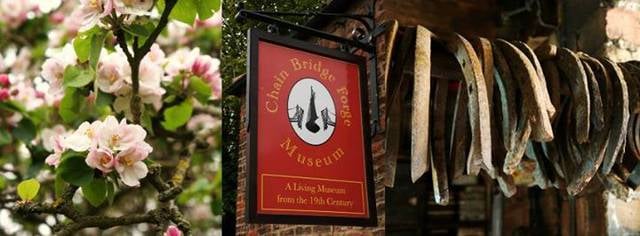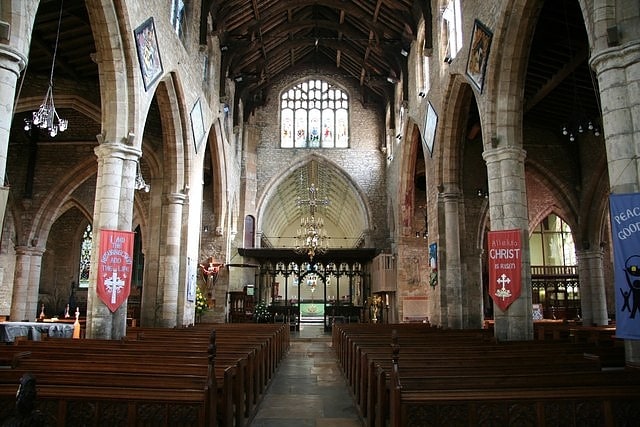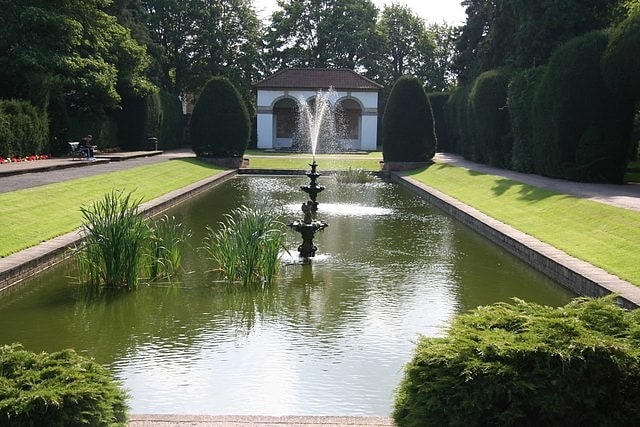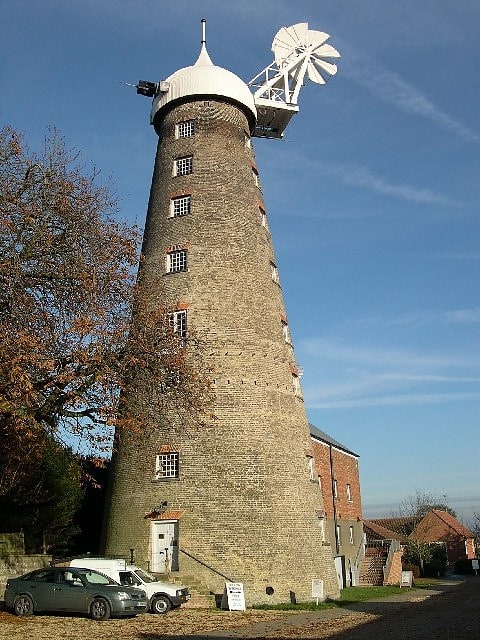Discover 5 hidden attractions, cool sights, and unusual things to do in Spalding (United Kingdom). Don't miss out on these must-see attractions: Chain Bridge Forge, Ayscoughfee Hall Museum, and St Mary and St Nicolas. Also, be sure to include Spalding War Memorial in your itinerary.
Below, you can find the list of the most amazing places you should visit in Spalding (England).
Table of Contents
Chain Bridge Forge

Chain Bridge Forge is an early 19th-century blacksmith's workshop, on High Street, Spalding, Lincolnshire, England.
The forge, on the south bank of the River Welland, has been transformed into a living museum, where visitors can learn about Spalding's history, blacksmithing and the Forge through displays, guides and videos. There are also opportunities to try blacksmithing, watch demonstrations and buy iron-forged products.
The Forge is believed to have been purpose-built as a blacksmith's forge in the first half of the 19th century, when it was owned and run by Francis South. The Forge derives its name from the foot-bridge which crosses the Welland next to the building, and which was originally made of chains. Watercolours by Hilkiah Burgess in the Spalding Gentlemen's Society collection indicate that it was a draw bridge, designed to enable boats and barges to navigate up river from the Wash. At this time there was a working port at Spalding, and the accounts for the period 1850-1860 show that the blacksmith of Chain Bridge Forge was servicing the boats here.
In 1899, the forge came into the possession of George Dodd and remained in the family for three generations. During this period, it predominately serviced the community by shoeing horses and doing agricultural repairs. The twentieth century saw a steady decline in the blacksmith's role, and adapting to this change Geoffery Dodd, George Dodd's grandson, spent much of his career designing and building the frames for floats in Spalding's Flower Parade.
In the 1980s, as Dodd neared retirement and with the building in a poor state of repair, he approached the South Holland District Council. After two years of discussions, the site was purchased from him by the council for the nominal fee of £1, on 20 September 1988. The building was restored in 1991 with the assistance of English Heritage, by the Spalding builders R. G. Sharman, on behalf of the District Council.
In 2011, the Friends of Chain Bridge Forge were formed to lead a new project to turn the Forge into a museum and heritage centre. As part of a campaign to raise awareness of the building and the project, the Friends, with the assistance of South Holland District Council who still own and manage the property, opened the Forge to the public during the Spalding Flower Parade in 2011.[1]
Address: High Street, PE11 1TX Spalding
Ayscoughfee Hall Museum

Building. Ayscoughfee Hall is a grade I listed building and modest associated parkland in central Spalding, Lincolnshire, England, and is a landmark on the fen tour.[2]
St Mary and St Nicolas

Building. The Church of St Mary and St Nicolas is an active Church of England parish church in Spalding, Lincolnshire, England. It was built c. 1284 on the site of an earlier church, and is a Grade I listed building.[3]
Spalding War Memorial

Spalding War Memorial is a First World War memorial in the gardens of Ayscoughfee Hall in Spalding, Lincolnshire, in eastern England. It was designed by the architect Sir Edwin Lutyens. The proposal for a memorial to Spalding's war dead originated in January 1918 with Barbara McLaren, whose husband and the town's Member of Parliament, Francis McLaren, was killed in a flying accident during the war. She engaged Lutyens via a family connection and the architect produced a plan for a grand memorial cloister surrounding a circular pond, in the middle of which would be a cross. The memorial was to be built in the formal gardens of Ayscoughfee Hall, which was owned by the local district council. When McLaren approached the council with her proposal, it generated considerable debate within the community and several alternative schemes were suggested. After a public meeting and a vote in 1919, a reduced-scale version of McLaren's proposal emerged as the preferred option, in conjunction with a clock on the town's corn exchange building.
The total cost of the memorial was £3,500, of which McLaren and her father-in-law contributed £1,000 each; her brother-in-law donated a pair of painted stone flags and the remainder was raised from voluntary subscription, which took until 1922. The memorial consists of a brick pavilion at the south end of the garden and a Stone of Remembrance, both at the head of a long reflecting pool, which incorporates the remains of an 18th-century canal. It was unveiled at a ceremony on 9 June 1922. Lutyens went on to use the style of the pavilion for shelter buildings in several war cemeteries on the Western Front, though none of his other war memorials follow the design and the memorial became relatively obscure. Spalding War Memorial is today a Grade I listed building, having been upgraded when Lutyens's war memorials were declared a "national collection" and all were granted listed building status or had their listing renewed.[4]
Moulton Windmill

Tourist attraction in Moulton, England. Moulton Windmill in the Lincolnshire village of Moulton, between Spalding and Holbeach is a restored windmill claimed to be the tallest tower mill in the United Kingdom.
The nine-storeyed mill is 80 ft (24.4 metres) to the curb and 100 ft (29.6 metres) to top of the ogee cap. In full working order again with its (or her) four patent sails on, Moulton mill is the tallest working windmill in Great Britain and one of the tallest worldwide. (The 9-storey tower windmill at Sutton, near Stalham, Norfolk has about 67 ft 6 in to the curb, 79 ft 6 in to the top of the Norfolk boat-shaped cap).
The mill, built in c. 1822 by Robert King, was a fully functioning windmill, grinding wheat and other products. However, on 20 December 1894, the sails were damaged in a harsh gale and were removed in 1895. Soon afterwards, a steam system was installed to power the mill. A. W. Tindall leased it from the King family from 1890 until 1921. The Biggadike family, who took over tenancy of the mill in 1924 continued to mill, albeit small quantities of animal feed, until 1995.
A local campaign was established to restore the Grade I listed mill to full working condition. In 2003, the mill featured on the first series of BBC2's Restoration with Tim Wonnacott as its Celebrity Advocate. The project won a large Heritage Lottery Fund grant, which, along with many fundraising events has meant that the "Friends of Moulton Mill" campaign has succeeded in raising enough money to restore and refurbish the mill's structure and add a new cap. The new white ogee cap, (which weighs 14 ton) is visible for miles across the flat Fenland landscape. A café and shop has also been built, and the mill has disabled access, allowing disabled visitors to see some of the mill's inner workings. The Friends of Moulton Mill have encouraged local people to "sponsor" a sail shutter. In March 2007, the mill ground flour again. The reefing gallery, an external balcony which is 40 ft from the ground, was restored in June 2008.
New sails were fitted on 21 November 2011 to complete the restoration of the mill. The community restoration took 14 years to complete at a cost of nearly £2m.
On 28 April 2013 the first bag of flour in over 100 years was ground with wind power.[5]
Address: High Street, PE12 6QB Spalding